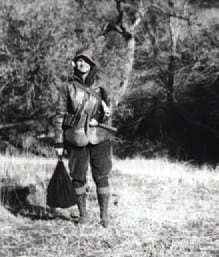
Curiosity shapes the world around us. Science is the pursuit of comprehension, driven by observation and intrigue. Boiled down to its most basic components, science is a guess and check approach to the unknown. You have probably used it in the classroom, in deciding to jump in a pool, or in determining if your milk has spoiled.
The spectrum of scientific practice, from traditional academia to daily human inquisitiveness, all share this common thread of understanding. Science touches us all and the application of new knowledge can drastically impact human life: cures have been discovered for many diseases, agricultural production has risen to meet the needs of growing populations, and new forms of communication and information sharing have been developed, just to give a few examples. It is through this scientific method, at all levels of inquiry that we as individuals, communities, and societies gain knowledge and advance as a species.
I am appreciative of the human affinity for analysis, especially in the realms of ecology and stewardship. A scientific approach to landscape scale management allows for better decision-making.

Save Mount Diablo’s 2016 Bioblitz
“Better”, of course, is subjective in nature, but I have a clear bias towards land conservation. The desire to understand what we need to protect has given rise to this conservation ethos, prompting legislation in support of the most sensitive species and resources. Save Mount Diablo is no stranger to this ethos, actively demonstrating the value of land conservation and the protection of threatened and endangered species, wildlife corridors, and water resources in Contra Costa County and beyond.
In an effort to promote scientifically informed resource related decisions, and in memory of our co-founder, Mary Bowerman, the Dr. Mary L. Bowerman Science and Research Program was initiated in 2013. The program has supported three investigations of the Morgan Fire footprint and has funded a number of research projects in the Diablo Range, all helping to increase our collective understanding of local ecology. The program offers small grants of up to $1,000 but what is more valuable, according to 2015 grant awardee, Dr. David Hutton, is that “the Mary Bowerman Science and Research Program provides credibility to research applications for projects in Mount Diablo State Park and the East Bay Regional Park District. The support from Save Mount Diablo facilitates access to more remote and poorly understood regions of our shared open space.”
Hutton, for example, is currently exploring the diversity of non-vascular plants in the Diablo Range, including mosses, liverworts, and hornworts, commonly referred to as “bryophytes”. This project, funded by the Mary Bowerman Science and Research Program, has already resulted in the discovery of species with no previous record in Mount Diablo State Park. David and his colleagues are filling gaps in local floristic knowledge, contributing to the understanding of our dynamic mountain and its surrounding foothills.
Not only is science painting a more robust picture of Mount Diablo State Park, Save Mount Diablo is also benefiting from research projects on our flagship Curry Canyon Ranch property.

2016 Bioblitz: The Final Morgan Fire Footprint Investigation
Two projects, funded in 2015, are examining Curry Creek. In particular, Roxanne Hulme- Foss is studying grazing impacts to the riparian corridor and Dr. Patina Mendez and her research associate, Casey Hubble, are examining the diversity of invertebrates in the water channel. Both research approaches will inform stewardship decision making and help manage for optimal creek conditions.
Cattle can be used as an effective landscape management tool but when applied to riparian corridors, grazing pressure can have adverse effects on wildlife habitat, water quality, and erosion.

Mary Bowerman, 1932. Collecting samples from the mountain
Roxanne’s study was designed to reveal the differences between historically ungrazed sections of Curry Creek in Mount Diablo State Park and grazed areas of Curry Creek on Curry Canyon Ranch.
Using photos, point intercept, line intercept, and belt transect monitoring techniques, Roxanne focused on differences between bare ground cover, native herbaceous species, and woody overstory vegetation.
By documenting a clear difference in ground cover percentage in the grazed sections of Curry Creek, the timing and duration of grazing in the valley of Curry Canyon Ranch could be influenced by the results of this study.
Patina and Casey are contributing to the baseline biological inventory of Curry Canyon Ranch with their study of invertebrate diversity in Curry Creek. Utilizing light traps to collect specimens, composition will be used to determine changes in stream health. Insect orders found from May through November include Plecoptera (stoneflies), Hemiptera (true bugs), Magaloptera (alderflies), Coleoptera (beetles), and Trichoptera (railflies), with the last order having the highest species richness in the stream channel.
Whether we are attempting to understand the dynamics of Curry Creek or navigating the intricacies of climate change, medicine, or politics, the guess and check method will continue to strengthen our collective knowledge. Save Mount Diablo strives to support the inquisitive with property outings, citizen science events, and small grants for research projects. We need to continue our observations of the world around us and continue to ask questions. Science is an inclusive, ongoing process, and as human curiosity never ceases, there exists the capacity for us all to participate in the scientific method.

